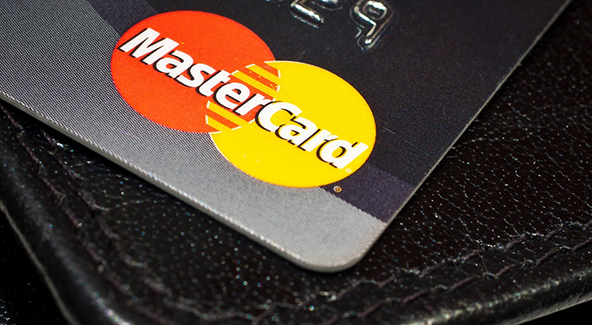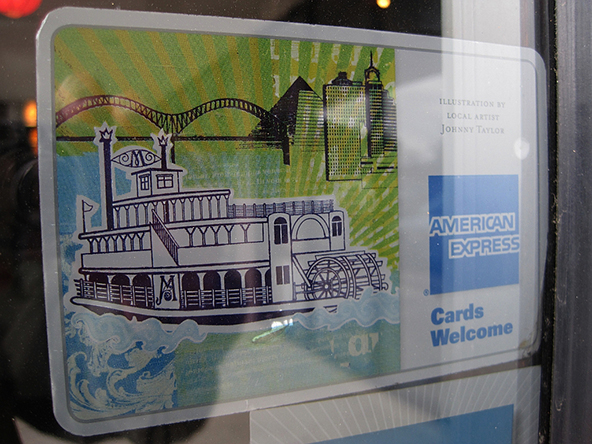How Visa and MasterCard Manage Excessive Chargeback Levels

Visa and MasterCard monitor chargeback levels on a monthly basis. Their acquirers — the banks which maintain direct processing relationships with the merchants — are required to calculate and report the chargeback-to-transaction ratios (CTR) for each of their merchants. If a merchant reaches excessive chargeback levels, the acquirer is required to take remedial actions to bring those down.
Crucially, acquirers pay heavy fines for each merchant deemed to have reached excessive chargeback levels, which makes them extremely sensitive toward anything remotely approaching such ratios. In practice, this attitude means that an acquirer is much more likely to terminate a merchant account, which is approaching “excessive” levels than it is to start working with the merchant toward bringing those levels down, as Visa and MasterCard suggest that they do. So, needless to say, “excessive” is a very bad word indeed when it is applied to chargebacks. Let’s take a look at how the whole process works.
Getting the Terms Right
Here is what the terms used in the Excessive Chargeback Program (ECP) mean:
- The chargeback-to-transaction ratio (CTR) is the number of chargebacks received by a given acquirer for a merchant in a calendar month, divided by the number of that merchant’s sales transactions in the preceding month. The transaction amount is not considered for chargeback purposes, it is the number that counts. So, if you had processed 1,000 transactions in the month of January and received 5 chargebacks in February, your CTR would be 0.5 percent (50 basis points).
- A Chargeback-Monitored Merchant (CMM) is one whose CTR is greater than 50 basis points and who has at least 50 chargebacks in a calendar month.
- An Excessive Chargeback Merchant (ECM) is one who, in each of two consecutive calendar months (called the “trigger months”), has had a minimum CTR of 100 basis points and at least 50 chargebacks in each of these months. The ECM designation is maintained until the the merchant’s CTR falls below 100 basis points and remains there for two consecutive months.
- The ECM Claim Period begins on the first day of the first trigger month and ends when the merchant no longer is an ECM, as defined above.
Now let’s take a look at how the reporting process works.
Chargeback-Monitored Merchant Reporting Requirements
Each calendar month, your acquirer submits a separate CMM report for each of its merchants which qualify as a CMM for the previous calendar month. When determining if it is required to submit a CMM report for a given merchant, the acquirer calculates the CTR as explained above.
Merchants should understand that Visa and MasterCard assess their processors fees for each report submitted for a merchant with excessive chargeback levels, providing them with yet another incentive to be tough on offenders. These fees can be substantial. For example, MasterCard assesses acquirers a reporting fee of $50 for each CMM report submitted. The CMM report contains the following information about the merchant:
- Name and location of the CMM.
- Calendar month of CMM qualification being reported.
- The CMM’s CTR for the reported calendar month.
- The merchant category code (MCC) assigned to the CMM and a description of the nature of the CMM’s business.
- The number and gross dollar volume (GDV) of the CMM’s sales transactions for the reported month and for the preceding month.
- The number and GDV of chargebacks of the CMM’s sales transactions for the reported month.
And just so that you get a sense of why banks take those reports seriously, consider that if an acquirers fails to submit to MasterCard a CMM report within the specified time frame, MasterCard can fine them for up to $5,000 per month for each month that the CMM report is overdue.
Excessive Chargeback Merchant Reporting Requirements
The acquirer is required to submit a separate ECM report for each of its ECMs (instead of a CMM report) within 30 days of the end of the second trigger month (see definition above) and on a monthly basis thereafter, until that ECM’s CTR falls under 100 basis points and remains there for two months in a row. The acquirer is also required to provide a copy of the ECM report and the Excessive Chargeback Program Standards to each ECM merchant. MasterCard’s reporting fee is $300 for each ECM report submitted.
Each ECM includes all of the information required for the CMM report (see above) and the following additional information:
- A description of the acquirer’s chargeback controls in place for monitoring the ECM’s activities.
- An examination of the practices that caused the ECM to be in violation of the ECP Standard.
- An acquirer action plan for reducing the ECM’s CTR.
- An electronic file with the transaction details for each chargeback received by the acquirer for the ECM in the calendar month.
So all that and the $300 fee on top of it! Oh, and If the acquirer fails to submit an ECM report within the stated time frame, it can be fined up to $500 per day for each of the first 15 days that the ECM report is overdue and up to $1,000 per day thereafter until the delinquent ECM report is submitted. So, you can see why most acquirers would rather not deal with chargeback-prone merchants at all.
Excessive Chargeback Program Assessment
And if that weren’t enough, in addition to the reporting fees, acquirers can be assessed issuer reimbursement fees and violation assessments for excessive chargebacks arising from an ECM. To give you an idea of what these fees may look like, let’s take a look at how MasterCard calculates assessment fees for its excessive chargeback program.
MasterCard determines an acquirer’s fine for the monthly issuer reimbursement fees and the assessments for each ECM as shown below:
- Calculate the CTR for each calendar month that the ECM exceeded a CTR of 100 basis points.
- From the total number of chargebacks, subtract the number of chargebacks that account for the first 100 basis points of the CTR. The result is the number of chargebacks above the threshold of 100 basis points.
- Multiply the result from step 2 by $25. This is the issuer reimbursement.
- Adjust the result in step 3 to reflect the extent that the processor has exceeded the 100 basis points threshold by multiplying the value in step 3 by the CTR. Divide this result by 100. This amount is the violation assessment.
For example, let’s say that a processor has acquired sales transactions and chargebacks over a six-month period in the amounts shown in the table below:
|
Month |
January |
February |
March |
April |
May |
June |
July |
|
Sales Transaction |
95,665 |
95,460 |
95,561 |
95,867 |
95,255 |
95,889 |
95,758 |
|
Chargebacks |
720 |
1,003 |
1,301 |
1,256 |
1,175 |
923 |
824 |
|
CTR in basis points |
– |
105 |
136 |
131 |
123 |
97 |
86 |
At the end of July, the merchant was no longer an ECM, as its CTR was below 100 basis points for two consecutive months. MasterCard calculates assessments and issuer reimbursements for each ECM month (February through July).?áThe assessment for April, (using March sales transactions and April chargeback volumes) is calculated as follows:
- The CTR = April chargebacks / March sales transactions = 1,256 / 95,561 = 0.01314 or 131 basis points (rounded).
- The number of chargebacks in excess of the 100 basis points is determined by subtracting 1% of the March sales transactions from the number of April chargebacks. One percent of the March sales transactions (95,561 x 0.01) is 956. 1256 – 956 = 300 chargebacks.
- The issuer reimbursement for April is 300 x $25 = $7,500.
- The violation assessment is ($7,500 x 131) / 100 or 985,500 / 100 = $9,825.
So for each ECM month, the issuer reimbursement fees and assessments for the processor are as follows:
|
Month |
Issuer Reimbursement |
Assessment |
Total |
| February |
$1,150 |
$1,208 |
$2,358 |
| March |
$8,650 |
$11,764 |
$20,414 |
| April |
$7,500 |
$9,825 |
$17,325 |
| May |
$5,400 |
$6,642 |
$12,042 |
| June |
$0 |
$0 |
$0 |
| July |
$0 |
$0 |
$0 |
| Total |
$22,700 |
$29,439 |
$52,139 |
And these fees can add up!
The Takeaway
As you see, processors have a real good incentive to crack down hard on high chargeback levels, which explains why they will often take drastic measures long before a merchant’s chargeback rate comes even close to one percent. There is not much merchants can do about it and anyway, it is in your own best interest to try and keep chargebacks to a minimum.
Image credit: Engage.acma.gov.au.



The penalties being levied by processors indicate the seriousness of the problem. 1% was picked as a tolerable error rate, but it would really be better for everyone…merchants, processors, consumers…if chargebacks went to near zero.
How could this be accomplished?
There are two types of chargebacks. Legitimate chargebacks, where the consumer got charged for something they never purchased and fraudulent chargebacks, where the consumer did purchase the goods but doesn’t remember doing so or is consciously committing fraud.
Legitimate chargebacks can only be addressed by a focused continuous improvement program. A Pareto chart of the types and causes of legitimate chargebacks needs to be developed and then process improvements and error-proofing steps need to be put in place to drive those errors out of the system. Here the processor penalties can motivate action: when the cost of paying the penalty exceeds the cost of fixing the problem, merchants are likely to step up and act.
But if a merchant has good processes in place, the processor penalties for fraudulent claims are less an incentive and more just salt in the wound. For the fraudulent chargebacks, a different approach is needed: we need to put systems in place to decrease the likelihood that the consumer will commit fraud.
We don’t have to get all Freudian about consumers motivations to steal. We can just notice that chargebacks are dramatically lower in “card present” vs. “card not present” situations and try to make the card not present situations look more like the card present ones.
SecureCall allows merchants to “take” the credit card information (number, expiration date and CVV code) without the call center agent ever seeing or hearing that information. The consumers are entering their own numbers directly into the CRM through their phone. This is just like swiping the card in the “card present” situation. Before the purchase is submitted, the charges are presented back to the consumer, who has to authorize the purchase with a voice signature, by stating their name. This is the equivalent of having a consumer click “yes” on the card reader to authorize a charge and then signing their name.
The final deterrent to fraudulent consumer chargebacks occurs when the customer gets a system generated email which includes a link to their voice authorization for the purchase.
Consumers using this system know that winning a chargeback is highly unlikely. The agent could not have misused a CC number…he/she never had it. The purchase can not go through without a verbal OK from the consumer, and the consumer can clearly see the company has a record of it.
Penalties get one’s attention about a problem. But only continuous improvement programs and technology based error proofing strategies will fix that problem.
Dennis Adsit, Ph.D.
KomBea Corporation
If V/M would stop being so one sided with its chargeback regulations, and adopt a similar policy to Amex. Customers wouldn’t be filing fraudulent chargebacks as often. Thus reducing the chargeback ratio dramatically.
Merchants continuously get burned by V/M regulations, winning the first chargeback dispute then losing to a second or third.
The consumer is becoming hip to the game which is the customer is always right even when they are wrong. Until V/M ammends their regulations to be more fair to all, this game will continue to play out as it is now.
Ecommerce is a prime example. Signature on delivery is being circumvented by the delivery companies allowing anyone in the household to sign for delivery. Leaving the business owner defenseless in a dispute.
V/M regulations have not caught up to the technology era that we live in, and too many loopholes are not being filled. There is too much grey area and not enough black and white answers.